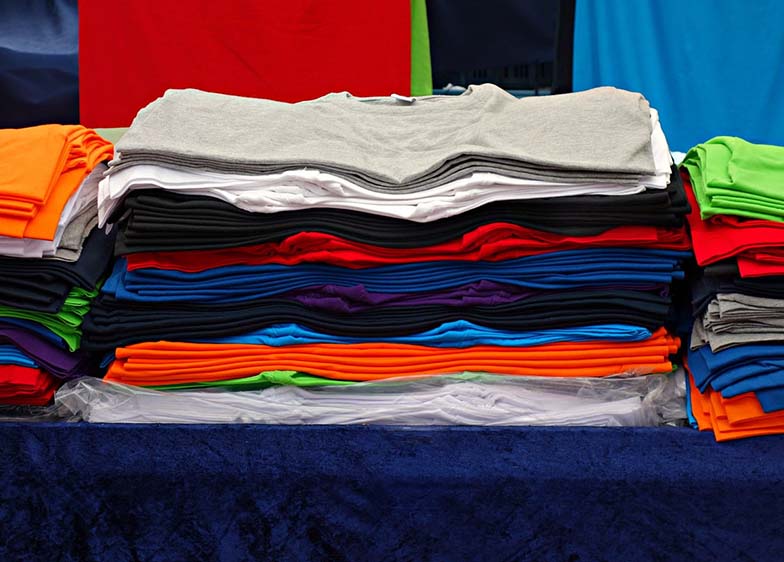
A garment quality control checklist is a document used by textile manufacturers and suppliers. It outlines the product specifications and quality requirements for the various textile products that are manufactured.
The garment quality control checklist is typically framed before production begins. This checklist acts as a reference for the supplier and manufacturer throughout the production process.
It is important that both suppliers and manufacturers draft this checklist after a thorough understanding of the requirements and quality standards of the garments to be manufactured.
Let’s know more about the garment quality control checklist for textile testing.
1. Why Are Garment Quality Control Checklists Important?
Garment quality control checklists serve as a set of preventive guidelines to identify defects earlier in the supply and production cycle that may cost heavily if left unnoticed.
It also provides room for amendments and corrections before large-scale production begins.
A garment quality control checklist ensures that:
- The supplier and the textile manufacturer finalize an agreement without any conflict of ideas about mutual benefits.
- The product meets the regulatory standards of the retail market.
- The supplier adheres to the standards of product quality.
2. What Are the Essential International Regulatory Bodies for Garment Quality Control?
Garments meant for export need to meet the safety and quality requirements of the destination market. The quality control checklist includes a section defining the standards of the specific market.
Quality control of clothes for the European Union, for instance, must adhere to the Registration, Evaluation, Authorization, and Restriction of Chemicals (REACH) directives. Similarly, the US market strictly follows the guidelines as per the Consumer Product Safety Improvement Act (CPSIA).
3. What Should a Garment Quality Control Checklist Include?
The process of garment quality control also includes adhering to specifications about instruments that should be used to measure garments. Furthermore, the checklist details a few of the following packaging specifics:
- Weight and dimensions of the package.
- Labeling and marking requirements by the shipper.
- Boxing material requirement as provided by the shipper.
- Details of packaging method and assortment.
The garment quality control checklist for textile testing also includes a list of tools such as:
a. Measuring Tape
This is a flexible plastic tape used to verify dimensions of garments, retail packaging, and boxes used for shipment.
b. Digital Camera
This is used for photographic evidence, which is self-explanatory and hence, saves time that goes into explaining the details of defects.
c. Defect Stickers
These help to categorize defects with a detailed description. Tracking defects using stickers is easy and saves time.
e. Pantone Color Swatch
Pantone Matching System (PMS) is especially important to compare colors of garments with the specified color in the checklist. It helps to check color codes determined by the manufacturer.
f. Barcode Scanner
This scanner helps track products throughout the supply chain. It also helps segregate products or shipment boxes without a barcode.
4. What Tests do Quality Control Inspectors Perform as Part of the Garment and Textile Tests?
Quality control inspectors check for the following parameters:
a. Stitching Quality and Workmanship
The factors checked are:
- The workmanship of the garment based on the guidelines.
- Presence of open seams.
- Presence of puckering in seam lines
b. Visual Inspection
Visual inspection includes:
- Checking for alignment and balance of garment.
- Making sure that the labels are placed as per specifications.
- Ensuring that the garment size and corresponding label is matching.
c. Fabric and Raw Material Quality Check
The following aspects should be a part of the fabric and raw material quality check:
- The fabric used to stitch garments should be as per the approved design.
- Inspection parameters like fabric weight, color, and fabric shrinkage limit should be verified.
- Measurements of the garment must be based on the specification sheet.
d. Garment Packing
These factors must be considered when inspecting the garment packaging:
- The packing list must be verified to ensure it is in keeping with the buyer’s instructions.
- Tags and stickers on the tag should be placed in the correct manner.
- Garments should have gone through a broken needle detection machine, which helps detect the presence of unnecessary elements like broken needles in garments.
5. Who Benefits by Strictly Adhering to the Quality Control Checklist?
The following players in the supply chain stand to benefit from an effective quality control checklist:
a. Manufacturers and Suppliers
Suppliers and manufacturers have equal access to quality control checklists to verify guidelines at periodic intervals. This helps them avoid defects and monetary losses.
b. Sales and Marketing Executives
The sales and marketing teams may use the specifications in the quality control checklist to market the products in a better way.
c. Quality Control Staff
The quality control staff may belong to the factory management, purchaser’s internal staff team or maybe a third-party inspector. The checklist helps the concerned staff to ensure that the quality of the products is in line with the specifications.
Wrap Up
The best time to outline the checklist for garment quality control for textile testing is before the start of production. Having a strict set of guidelines that are agreed upon by the supplier and the manufacturer will help boost product quality, resulting in increased ROI
